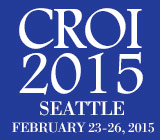 The current standard protocols for anal cancer screenings may fail to adequately detect pre-cancerous lesions among women living with HIV, aidsmap reports. Researchers analyzed data from HIV-positive women in New York City who underwent high resolution anoscopies (HRAs) after an abnormal anal pap test. They presented their findings at the 2015 Conference on Retroviruses and Opportunistic Infections (CROI) in Seattle.
The current standard protocols for anal cancer screenings may fail to adequately detect pre-cancerous lesions among women living with HIV, aidsmap reports. Researchers analyzed data from HIV-positive women in New York City who underwent high resolution anoscopies (HRAs) after an abnormal anal pap test. They presented their findings at the 2015 Conference on Retroviruses and Opportunistic Infections (CROI) in Seattle.
HIV-positive women and men are at elevated risk of anal cancer. And yet the medical community has not settled on the best means of screening women with HIV for high-grade squamous intraepithelial lesions (HSIL), which are abnormal tissue changes that may lead to invasive anal cancer. There are two main sets of guidelines at present. The New York State Department of Health/AIDS Institute’s guidelines recommend anal pap smears for women who have abnormal developments in anal or vulvar tissues, or who have a history of anal or genital warts or condylomata (which is caused by various strains of human papillomavirus, or HPV). The HIV Medicine Association (HIVMA) follows the same recommendations, but advises that HIV-positive women who have had receptive anal intercourse also undergo screening.
Out of 877 HIV-positive women who received a routine anal pap test (regardless of risk factors), 484 (55 percent) had abnormal results. A total of 290, or 60 percent, of those with the abnormal results received an anoscopy. Out of this group, biopsy results were benign in 34.5 percent of the women, while 38.3 had low-grade squamous intraepithelial lesions (LSIS, or mild dysplasia), and 27.2 percent had HSIL. While the more abnormal the read on the initial pap test, the more likely the women were to receive an HSIL diagnosis through the biopsy, some women who had pap tests with relatively low levels of abnormality still turned out to have HSIL according to the biopsy.
After adjusting for various factors, the researchers concluded that the only risk factor significantly linked to having HSIL was current or former smoking, which raised the risk by 1.93 when compared with never smoking.
Nineteen percent of the women who had abnormal anal pap smears would not have been advised to take that test according to the New York State guidelines; of that group, 26 percent were diagnosed with an HSIL. Seven percent of the women with abnormal pap smears would not have fit the HIVMA criteria for taking the test; of this group, 20 percent turned out to have an HSIL.
The researchers concluded that routine anal pap smears may benefit women with HIV.
To read the aidsmap story, click here.
To read the conference abstract, click here.
To view a webcast of the conference presentation, click here.
Advertisement
Advertisement
Advertisement






Comments
Comments